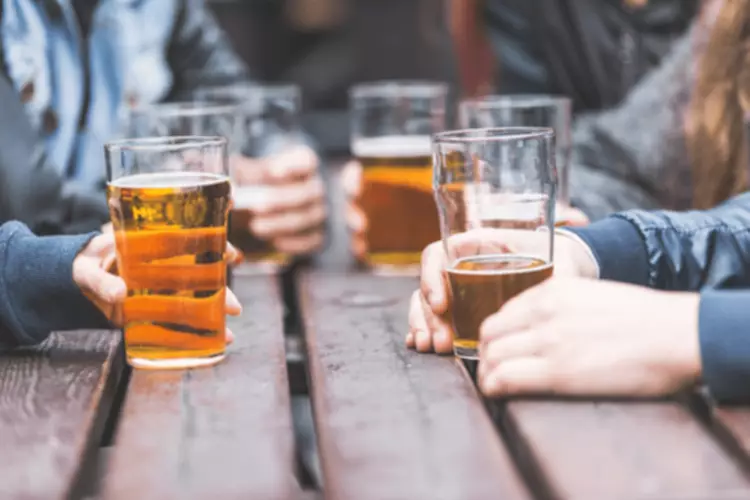They can help you determine your best treatment option, based on the nature of your pain. Doctors prescribe hydrocodone only for pain that needs daily, around-the-clock, long-term treatment. They may prescribe Percocet to be taken on a regular basis or just when needed to relieve pain. Like most drugs, hydrocodone can cause mild to serious side effects. Below are lists of some of the more common side effects this drug may cause. If you have severe, ongoing pain, your doctor may prescribe hydrocodone for you.

Hydrocodone
Naproxen More Effective Than Hydrocodone-Acetaminophen After Dental Surgery – Pain Medicine News
Naproxen More Effective Than Hydrocodone-Acetaminophen After Dental Surgery.
Posted: Tue, 31 May 2022 14:55:50 GMT [source]
When it’s time for you to stop taking opioids, ask for your healthcare professional’s help. Together you can create a plan to stop opioids slowly, called a taper. Tapering means slowly lowering over time the amount of opioid medicine you take until you stop https://ecosoberhouse.com/ completely. All opiate-based drugs can become habit-forming and cause physical dependence. Once you develop a Vicodin dependence, quitting or cutting back suddenly can cause withdrawal symptoms. This is because your body needs time to adjust and recover.
Adverse Reactions/Side Effects
It stops the production of certain chemicals in your brain, which can help relieve pain. Although they’re more alike than they are different, a few factors may influence which medication your healthcare professional prescribes. Careless, inappropriate, or deliberate misuse can have serious consequences including drug dependence and liver damage.
Vicodin Prescribing Information
It may also mean taking them in a way different from what is recommended, such as snorting or injecting them. An overdose may be caused by accidentally taking more than the doctor authorized in a day. You may also have an overdose by taking more than the amount your doctor authorized, for recreational use or to hurt yourself. Do not take more hydrocodone than your doctor prescribes, as this can lead to serious side effects. Financial assistance may be available to help you pay for hydrocodone. Medicine Assistance Tool and NeedyMeds are two websites that provide resources to help reduce the cost of this drug.
Description for Vicodin

Constant or severe pain can cause people to take these medications more often than prescribed. It can also cause them to take them at higher doses than ordered by their doctor. If the patient develops these signs or symptoms, raise the dose to the previous level and taper more slowly, either by increasing the interval between decreases, decreasing the amount of change in dose, or both. Do not abruptly discontinue hydrocodone bitartrate and acetaminophen tablets in a physically-dependent patient [see WARNINGS, DRUG ABUSE AND DEPENDENCE].
- Zohydro ER and Hysingla ER are extended-release forms of hydrocodone that are used for around-the-clock treatment of severe pain.
- Proper assessment of the patient, proper prescribing practices, periodic re-evaluation of therapy, andproper dispensing and storage are appropriate measures that help to limit abuse of opioid drugs.
- Tell your doctor if you are pregnant or if you plan to become pregnant.
- An opioid antagonist, such as naloxone, must be available for reversal of opioid-inducedrespiratory depression in the neonate.
Overdose Risk
- Your doctor will likely not prescribe hydrocodone for you if you have a blockage or narrowing in your digestive system.
- This means they will need to take larger amounts in order to feel its effects.
Vicodin is one of the most widely prescribed pain relievers in the U.S. and one of the most frequently abused. Check with your doctor right away if you have anxiety, restlessness, a fast heartbeat, fever, sweating, muscle spasms, twitching, nausea, vomiting, diarrhea, or see or hear things that are vicodin addiction not there. These may be symptoms of a serious condition called serotonin syndrome. Your risk may be higher if you also take certain other medicines that affect serotonin levels in your body. Do not change your dose or suddenly stop using this medicine without first checking with your doctor.
- Vicodin withdrawal occurs when a person stops using it after they have developed a physiological dependence upon it.4 You do not have to be addicted to Vicodin to experience withdrawal symptoms.
- This medicine is available only with your doctor’s prescription.
- Thus the risk of toxic reactions may be greater in patients with impaired renal function due to accumulation of the parent compound and/or metabolites in the plasma.
- To obtain the best possible outcome, NAC should be administered as soon as possible where impending or evolving liver injury is suspected.
Opioid medicines also can play an important role in treating pain from cancer. Rarely, opioids may be used to treat long-term pain that’s not caused by cancer when other treatments have not worked. This medicine will add to the effects of alcohol and other CNS depressants (medicines that can make you drowsy or less alert). Also, there may be a greater risk of liver damage if you drink three or more alcoholic beverages while you are taking acetaminophen. Do not drink alcoholic beverages, and check with your doctor before taking any of these medicines while you are using this medicine. It is very important that you understand the rules of the Opioid Analgesic REMS program to prevent addiction, abuse, and misuse of hydrocodone and acetaminophen combination.






